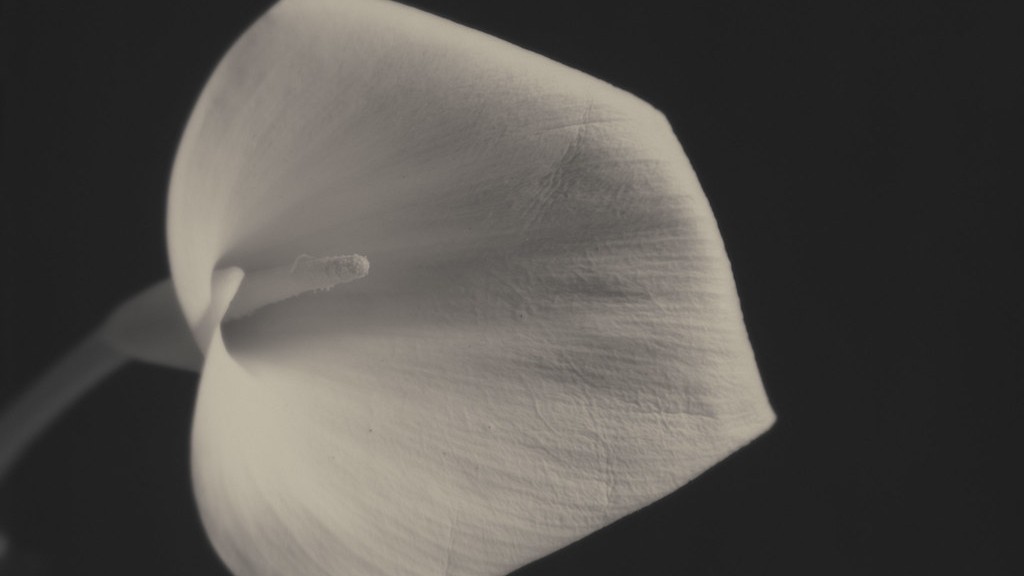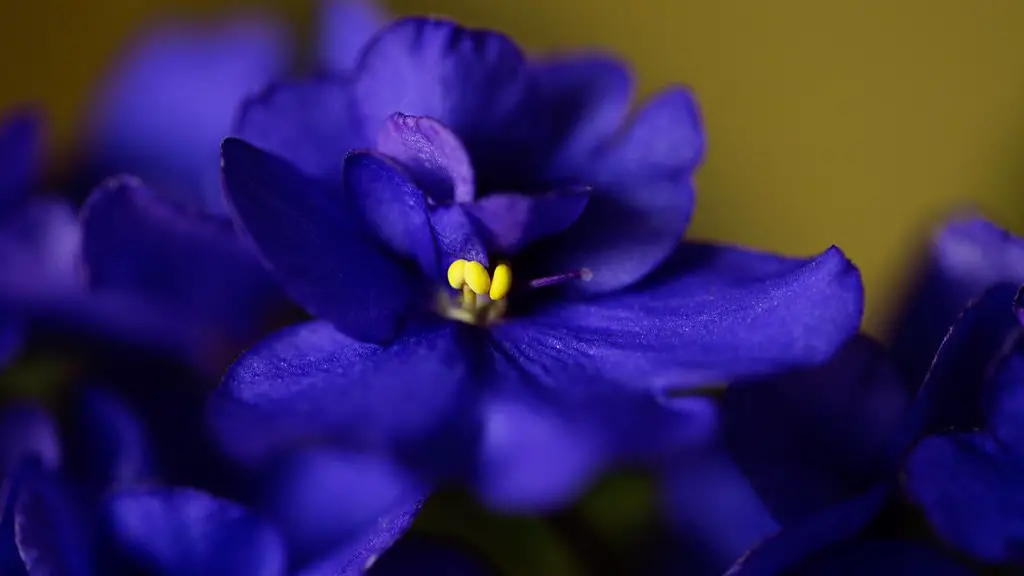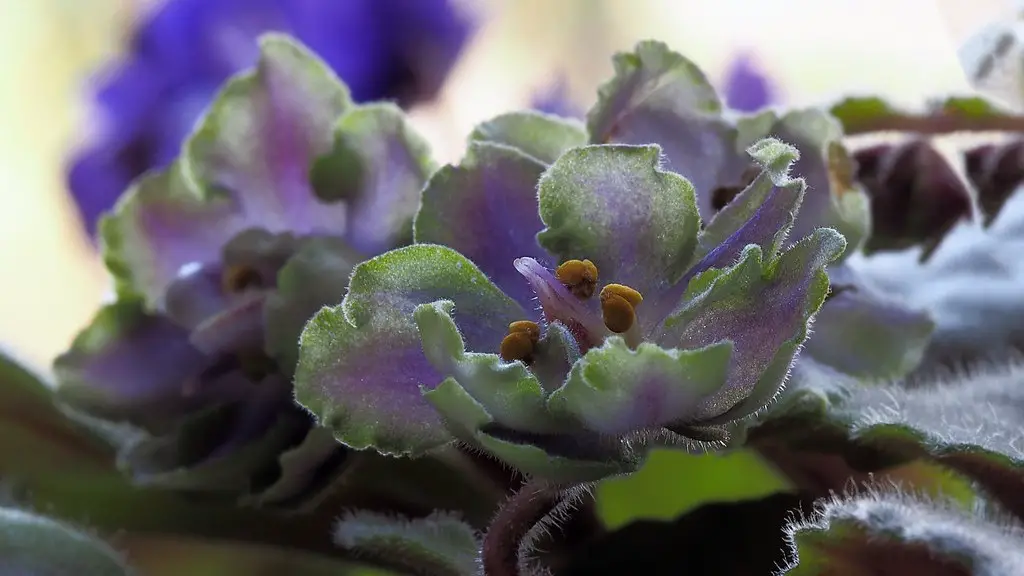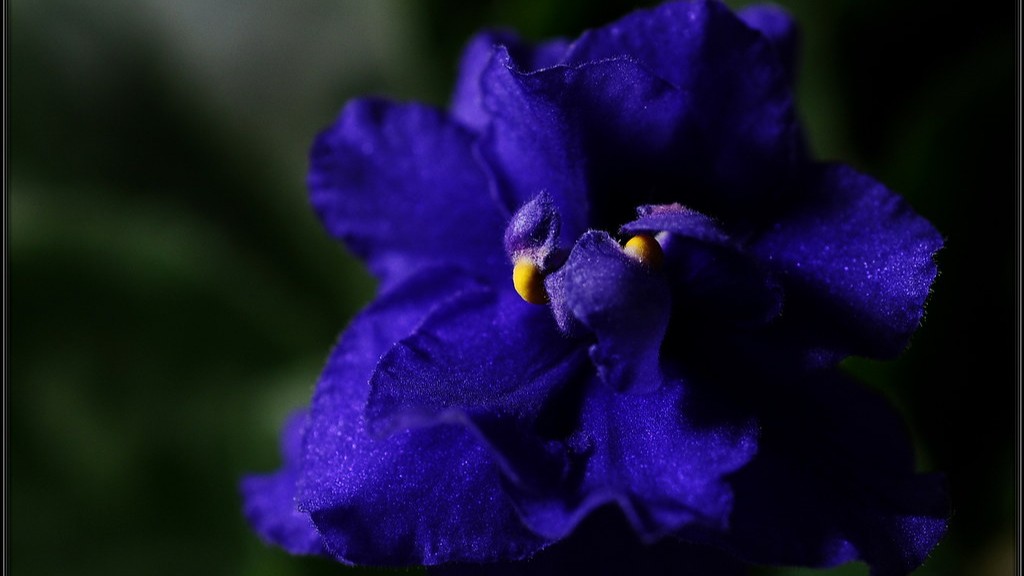Most African violets (Saintpaulia) cultivars grow best in a potting mix that has been specifically formulated for them. These mixes are usually soilless, or have only a small amount of soiling, and contain ingredients such as peat moss, perlite, and vermiculite.
There are many different types of potting soil that can be used for African violets, but a good quality African violet potting mix is best. This potting mix is sterile and has the perfect amount of drainage and air circulation that African violets need to thrive.
Can you use regular potting soil to repot African violets?
African violets need a very lightweight, soilless potting mix in order to thrive. Conventional potting mix is too dense and can crush or choke the delicate root systems of these jungle plants. African violets evolved in mossy outcrops with very little soil, so a soilless planting medium is ideal.
You may want to consider a potting mix that contains no soil at all for your houseplants. A premium African Violet mix, for example, may contain additional ingredients such as earthworm castings, compost, or composted/aged bark. These ingredients can help to provide nutrients and support for your plants.
How do you make potting mix for African violets
This is a great African Violet Soil Mix that will provide your plant with the necessary nutrients and drainage it needs to thrive. Peat moss, humus, or leaf mold will help to create a rich soil environment while garden soil will provide a solid foundation. Perlite, vermiculite, or sand will help to promote drainage and aeration within the soil mix.
African violets and phalaenopsis orchids are both beautiful, flowering plants that make great additions to any home. However, these two plants have very different growing requirements and cannot thrive in the same type of potting mix. African violets need a light, well-drained potting mix that is high in organic matter. Phalaenopsis orchids, on the other hand, require a firmer, well-drained potting mix that is low in organic matter. If you try to grow these two plants in the same potting mix, one or both of them will likely suffer.
Do African violets like bigger pots?
African violets do best when they are slightly pot-bound, so it’s best to choose a pot that’s on the smaller side. A professional tip is to use a pot that’s about 3-4 inches in diameter for a standard African violet plant.
If you are looking for a pot material that is fuss free and will last long, then plastic is the optimum material for growing African Violet plants. Plastic pots are available in a variety of sizes and colors, so you can choose the one that best suits your needs.
Are clay or plastic pots better for African violets?
When it comes to African violets, terra cotta is the ideal material to use for pots. This is because the pores in the terra cotta allow the roots to breath better, and prevent the soil from staying too wet. African Violet roots don’t go very deep; they like to go sideways, so don’t use a deep pot. Your pot must have suitable drainage holes so you can water from underneath.
Whenever you re-pot your African violet, be sure to use new potting soil. Additionally, make sure to water your plant well once you finish. By taking these extra steps, you’ll help ensure that your African violet stays healthy and thrives.
Can I make my own African violet soil
The African violet is a beautiful and popular houseplant. They are relatively easy to care for, but there are a few things to keep in mind when it comes to potting mix recipes.
Peat moss, vermiculite, and perlite are all great options for an African violet potting mix. A 50:25:25 ratio of peat moss to vermiculite to perlite is a good starting point. You can also use a 50:50 ratio of peat moss to either vermiculite or perlite.
Whichever recipe you choose, make sure that the ingredients are thoroughly mixed before potting your African violet. Also, be sure to water the plant regularly and provide it with plenty of bright, indirect sunlight.
To make sure your African violets thrive, use a soil mix that consists of 40% perlite, 30% coconut coir, 20% vermiculite, and 10% worm castings. If the soil is not draining fast enough, you can either increase the perlite content or replace the vermiculite with pumice. Peat moss can be used instead of coir if the pH is too high. For optimal results, African violets should be grown in soil with a pH of 65 to 68.
What is the secret to growing African violets?
African violets need at least 10 hours of bright, filtered light every day to do their best. They will scorch if you give them direct sunlight, so it’s best to avoid that. Keep the soil moist but well drained. You want it to be moist, but not soggy.
African violets are relatively easy to root in water using a leaf. The quickest and easiest way to do this is to take a leaf from your existing African violets, or even from a friend’s plant. Simply remove a healthy leaf from the plant, and place it in a cup of water. Within a few weeks, you should see roots begin to form. Once the roots are a few inches long, you can transplant the leaf into potting soil.
Can you use regular Miracle Grow on African violets
This fertilizer is perfect for use on all varieties of African violets and blooming houseplants. It is a high phosphorus formula that encourages blooming and also contains all the essential nutrients that these plants need to stay healthy and vigorous.
If you notice that your African violet’s leaves are starting to yellow or that its roots are crowded, it’s time to repot. Gently remove the plant from its current pot and transfer it to a new one that is slightly larger. Add fresh potting mix and water well.
What is the best way to repot African violets?
When repotting your African violet, be sure to use a thin layer of soil inside the pot and to set the root ball on top. Gently cover up to the base of the leaves and pat down just enough to stabilize. Place in a saucer of water and allow your plant to soak up as much as it likes.
Sphagnum peat moss is a type of moss that is often used as a potting soil for African violets. It is light and porous, which helps to aerate the soil and keep it moist. However, it is important to not let the soil get too soggy, as this can lead to problems with the roots of the plants.
Conclusion
When it comes to potting soil for African violets, you want to make sure that you use a soil that is light and well-draining. A lot of people like to use a mix of half peat moss and half perlite, which has worked well for them. You can also add a little bit of lime to the soil to help raise the pH level.
The best potting soil for African violets is a mix of peat moss, vermiculite, and perlite. This soil mix will provide the African violet with the best drainage and aeration.





